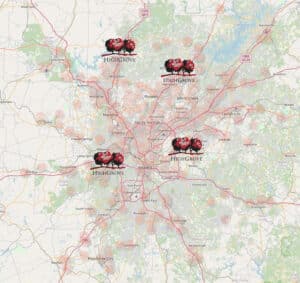 Take a moment to think about water flow on your commercial property.
Take a moment to think about water flow on your commercial property.
Do you have slopes where excess water creates soggy lawn areas? Do rainstorms create standing puddles of water on your hardscape areas? Is runoff from repeat heavy rains creating channels in the lawn or causing damage in hardscapes, such as cracks or sinking sections? Worse, yet, is water flowing close to your commercial facility and causing damage to its foundation?
When it’s not flowing properly on a commercial landscape, water—even when it’s coming down relatively calmly and not in sheets during heavy storms—can cause significant damage over time. Poor water flow can even erode soil and threaten plant materials that don’t like wet feet.
Despite water’s great power in these circumstances, something can be done to prevent the damage. Properly channeling water to storm drains or draining it away from properties through proper grades can eliminate standing water and ease the flow of water on your commercial property, eliminating these worries and concerns and extending the life of your valuable landscapes and hardscapes.
Here’s a closer look at two drainage methods — French drains and trench drains — and how they can benefit your landscape.
French Drains
 Water chooses the easiest route possible, often flowing downhill. It. That’s the concept behind slightly sloped French drains, which are underground trenches filled with gravel and pipes used to divert water away from commercial buildings, hardscape areas or other problem zones.
Water chooses the easiest route possible, often flowing downhill. It. That’s the concept behind slightly sloped French drains, which are underground trenches filled with gravel and pipes used to divert water away from commercial buildings, hardscape areas or other problem zones.
French drains are often used to remove excess water from low spots or excessively wet areas of a commercial lawn: behind a building, at the base of a slope where excess runoff has been directed, or along property lines where two adjoining commercial lots were grades separately, for instance.
The ultimate goal of French drains is to move water away from soggy areas.
French drains are named after Henry French, a judge and farmer in Concord, Massachusetts, who promoted the idea in an 1859 book about farm drainage.
Trench Drains
 While French drains are more designed in a more subsurface fashion, trench drains are used when hardscape areas meet or hardscape and landscape areas meet or areas where there are thresholds and doors that meet a sloped hardscape area.
While French drains are more designed in a more subsurface fashion, trench drains are used when hardscape areas meet or hardscape and landscape areas meet or areas where there are thresholds and doors that meet a sloped hardscape area.
Basically, the grade of the two areas causes water to flow where it shouldn’t. Here, we use concrete and metal grates in more of an open, sloped way to flow the water in a proper direction immediately away from the area in question.
Ultimately, trench drains will reflow surface water into grates or drains.
Directing Water Where It Needs To Go
Having some water troubles on your Atlanta commercial property? Wondering how you can redirect some poor water flow on your landscape to stop it from causing soggy areas or damaging hardscapes?
Contact Highgrove Partners at (678) 298-0550 or use the contact form to the right to schedule a free consultation
Image credit: French drain
Last modified: June 2, 2021



